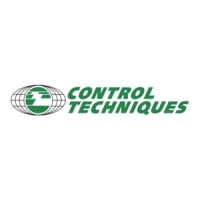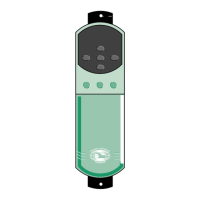32
5.2 PWM Speed feedback adjustment
For this speed adjustment only Hall signals from the motor are sufficient.
The voltage from armature can be used as feedback when the motor doesn't have an Encoder.
This sistem gives less precise operation (1/20 field of regulation with a noticeable reduction in torque).
This function is enabled by opening solder bridge S4 and inserting resistors RA and RCA on personalization
base.
RA resistor calculations: insert on base pin 2-23 to adapt the sistem to motor constant voltage.
RA 3K3 4K7 5K6 6K8 8K2 10K
VDC 13,6 17 19,7 23 26,5 31,8
RA 15K 18K 22K
VDC 44,5 52 62,9
On the table above the motor voltage values are shown, therefore speed gained through RA value (in
Kohm).
The VDC voltage values are refer to the peak BEMF with a 10V reference. If the motor manufacturer
declares RMS voltage, the corresponding VDC value will be VRMSx1,41.
Example E = 36VRMS
Nominal Speed = 4000Rpm
Consequently: VDC will be 36VRMSx1,41 = 50,76V
The table on page 52 shows a resistor with a value of 18Kohm. Inserting this resistor gives a motor scaling
adjustment of 4000Rpm at 10V of speed reference.
RCA resistor calculation insert in the header(adjustment area)to compensate for voltage loss due to Ri motor
resistor (internal).Thereby reducing the loss of RPM.
The formula is as follows:
RCA(k ohm) = ( 0,5*n*Ke ) / ( Vref*Ipk*Ri )
WHERE:
n= max. SPEED in rpm.
Ri=Max. cold motor resistance with brushes.
Ipk =Peak drive current.
Ke=BEMF from motor at 1000 rpm
Vref= max. applied reference voltage
If after insertion of resistor the motor is unstable, increase the Ohm value by inserting a superior value.

